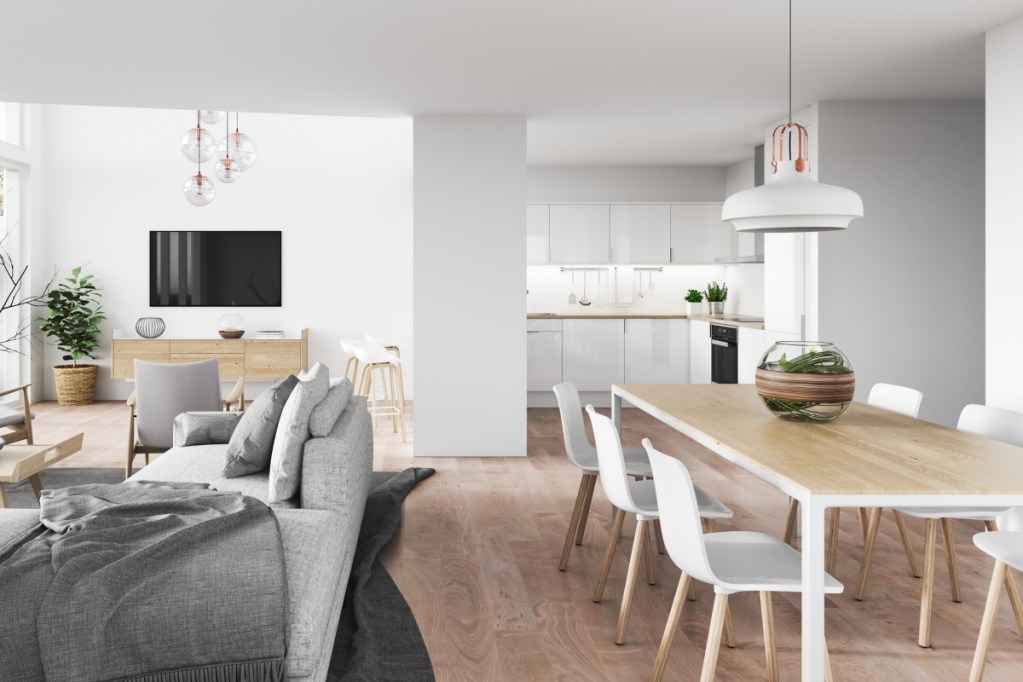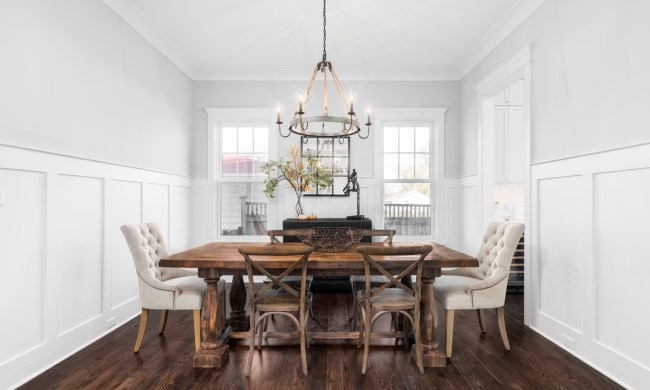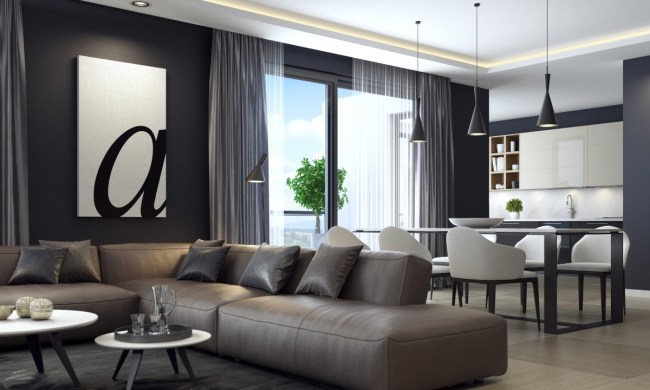If you’re craving the homely feel of traditional design but want an updated, modern take on the style, then transitional design is exactly what you’ve been searching for.
Transitional design blends traditional and modern styles to create a gorgeous aesthetic that bundles warmth, minimalism, peace, and luxury into one. Check out our guide to learn everything you need to know about this stunning interior design style.
What is transitional design?

Transitional design marries the homey nature of traditional styles with the sophistication of modern aesthetics. Playing to the strengths of both styles, transitional design offers homeowners a chance to create a luxe home look that is family friendly, cozy, warm, and inviting.
Many homeowners face the issue that, while traditional styles are optimal for families, the pieces can feel dated in newer, contemporary designs. However, modern design also has its drawbacks. The crisp white palettes, sharp lines, and elegant furniture aren’t always best suited for families.
Thankfully, transitional design provides a contemporary touch to traditional styles, keeping your home looking classic and timeless while offering a fresh and designer feel.
Elements of transitional style

Here are a few elements of transitional style that make this interior design aesthetic so versatile.
Neutral tones
The neutral tones in the color palette create a calm and soothing space. Often monochromatic, transitional spaces have a modern edge in the palette that helps bring sophistication and luxury to your space.
Warmth in the design
Warmer wood tones with the flooring or furniture and a focus on brown hues help invite warmth to the design. Cozy, soft lighting is also a must, making the space feel more relaxed and lived in.
Timeless pieces
When creating a transitional design, it’s best to avoid trends that will come and go within the year. While you want the space to feel contemporary and chic, opting for timeless pieces that never go out of style is better.
Balance between modern and traditional
Transitional design emphasizes the crisp colors and straight lines of modern design paired with the warm tones and gentle curves of traditional styles. Balance is key to achieving the perfect look.
How to decorate with transitional style

Now that you understand the basics of transitional design, here are some tips on how to decorate with a transitional style.
Choose a neutral color palette
First, you want to opt for a neutral color palette. Avoid harsh black or white, and instead, opt for soft tones. Cream, brown, beige, tan, gray, greige, or blush hues are best. If you want to include white or black, choose a soft matte black or an off-white to keep the palette gentle and homely. Additionally, many designers are choosing monochromatic palettes, particularly with brown tones, to create a retreat-like aesthetic for transitional spaces.
Keep decor minimal
Keeping with the modern side of this aesthetic, aim to keep decor minimal. Choose pieces with care and intention to create a curated look — handmade pieces, pottery, and framed pictures that adhere to the neutral color palette work best. Instead of going for a gallery wall, use two to four frames of the same size and line them up or place them in a grid for a more organized look.
Use texture to add dimension
Use texture to your advantage to make your transitional design feel less rigid. Texture adds dimension and will generate more visual appeal. Soften your space with chenille pillows framing your sofa with a few knitted throws to cozy up the space. A well-placed rug can also help add more textural variety to your space. If you opt for more modern furniture like a glass table or faux leather chairs, soften the look and feel of your room with a linen sofa or 100% cotton curtains.
Timeless pieces are a must
A wooden dining table, leather sofa, kitchen breakfast nook, neutral color palette, white throw blankets, or a wingback chair are all examples of timeless pieces that you can add to a transitional design. Timeless decor is a must, so it’s best to focus on the classics. Choose traditional armoires, dressers, or rugs for an inviting, family-friendly look. Just be sure to pair it with modern elements or a light color palette that exudes elegance.
Go for modern light fixtures
A fantastic way to strike the ideal balance needed for transitional design is to use modern light fixtures in your space. Globe lights or minimalist bar lights are great choices. You could also opt for simple recessed lighting or glass chandeliers that have a simple, modern edge.
Cozy furniture suits this aesthetic
Transitional design is best curated with cozy furniture. While you may want to stick with linen or cotton upholstered pieces in light neutral tones for a more contemporary look, it’s definitely worth considering the comfortability of the pieces you choose. Furniture should be family friendly, cozy, and a joy to kick back and relax in. Ensure textiles are soft and the cushions are comfy, even if they adhere more to modern styles in design.
Transitional design harmonizes modern and traditional styles to create a family-friendly space that feels like you walked right into a resort. Your bathroom and bedroom should remind you of a hotel or spa, while your living spaces and kitchen feel fresh and inviting. By following these tips, you’ll be sure to create the perfect transitional aesthetic.




